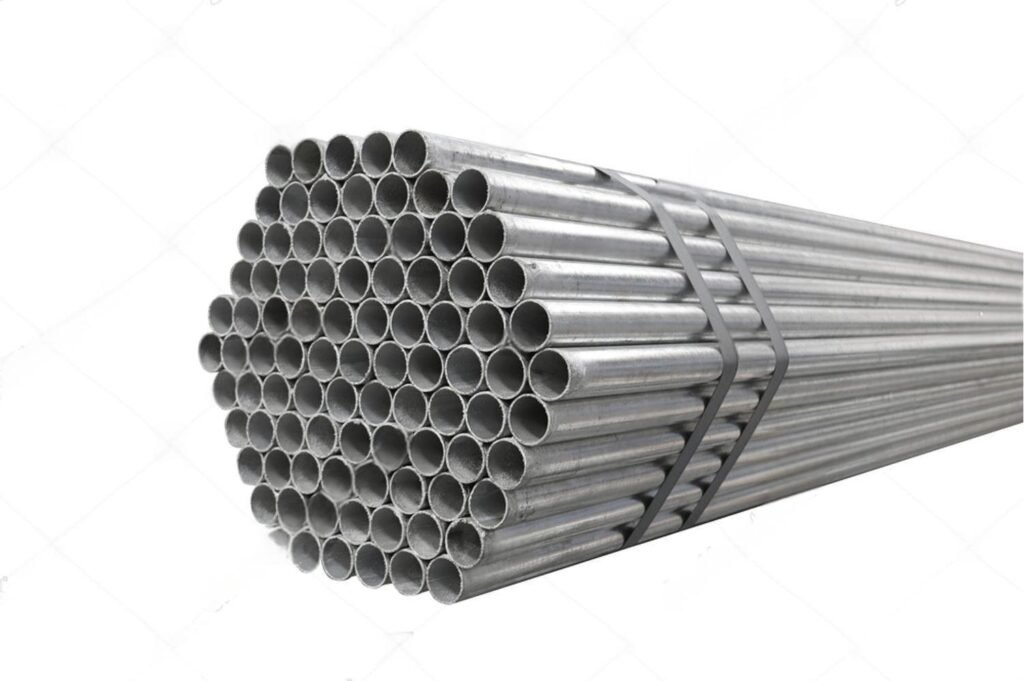Introduction
Steel 20#, a highly versatile and widely used medium-carbon steel, has carved its niche in the world of materials engineering. Known for its balance of mechanical strength, machinability, and affordability, Steel 20# meets the demands of diverse industries ranging from automotive to construction. This blog explores the chemical composition and mechanical properties of Steel 20#, its manufacturing process, key applications, and how it has become an integral part of modern infrastructure projects.
Understanding Steel 20#: Chemical Composition
Steel 20# stands out due to its specific chemical composition, which is carefully engineered to deliver optimal performance in various conditions. It adheres to industry standards and specifications, ensuring consistent quality.
The composition primarily includes the following elements (approximate range):
Carbon (C): 0.17% – 0.23%
Carbon determines the hardness and strength of the material. The medium carbon content in 20# provides moderate toughness and wear resistance without compromising machinability.
Silicon (Si): 0.17% – 0.37%
Silicon works as a deoxidizer and enhances the steel’s flexibility and strength.
Manganese (Mn): 0.35% – 0.65%
Manganese improves strength and hardness while maintaining ductility, making the steel more resilient under stress.
Sulfur (S): ≤ 0.035%
Sulfur is kept to a minimum to reduce brittleness and improve the steel’s weldability.
Phosphorus (P): ≤ 0.035%
Phosphorus also contributes to steel’s strength but may reduce toughness in larger quantities. It is, therefore, kept low in 20# steel.
This combination of components aims to strike a balance between machinability and performance, making 20# steel suitable for a variety of industrial applications.
Mechanical Properties of Steel 20#

The mechanical properties of Steel 20# are carefully tuned to align with the requirements of various engineering applications. These properties include strength, ductility, hardness, and impact resistance.
Tensile Strength
Steel 20# typically has a tensile strength of 410–550 MPa, meaning it can handle significant pulling forces without breaking. This is a crucial factor for load-bearing applications.
Yield Strength
The yield strength of Steel 20# is around 245 MPa, indicating the point at which the material will deform plastically. This property makes it reliable for components subjected to moderate mechanical stresses.
Elongation
The elongation rate of 20# steel is approximately 25%, reflecting its excellent ductility. It can stretch under stress without snapping, which is critical for forming and welding processes.
Brinell Hardness
The Brinell hardness of Steel 20# ranges between 121–163 HBW, which is moderate and allows for machining, forming, and wear resistance.
Impact Toughness
Its impact toughness ensures Steel 20# can withstand sudden forces or shocks without fracturing, making it an ideal choice for dynamic or load-bearing environments.
Applications Across Industries
Steel 20#’s chemical composition and mechanical properties have paved the way for its extensive application in industries that demand reliability and affordability. From automotive parts to construction materials, its versatility is unmatched.
1. Automotive Industry
Steel 20# serves as a trusted material for manufacturing various automotive components such as gears, shafts, fasteners, and crankshafts. Its combination of ductility and strength ensures durability under high-performance conditions.
2. Pipe and Tube Manufacturing
Widely used in pipeline systems, 20# steel is chosen for applications involving low to medium pressure. Its weldability and corrosion resistance make it ideal for oil, water, and gas transmission lines.
3. Engineering and Machinery
Steel 20# is a favored choice for machinery parts, brackets, and fasteners in engineering projects. The material’s ability to combine strength with ease of manufacture ensures cost-effective solutions for complex systems.
4. Construction and Structural Applications
The steel finds extensive use in constructing frames, bridges, and other structural components where a balance of strength and flexibility is crucial. Its moderate carbon content makes it suitable for applications requiring reliable performance under fluctuating loads.
Manufacturing Processes of Steel 20#
Steel 20# is manufactured using sophisticated processes to meet rigid quality standards. The following stages outline its production cycle:
1. Melting and Alloying
Raw materials, including iron ore and recycled steel scrap, are melted in a furnace. Alloying elements like carbon, manganese, and silicon are added in precise quantities to create the desired chemical composition.
2. Casting
The molten steel is cast into ingots or slabs. This step determines the preliminary shape and size of the steel and ensures uniform composition throughout the material.
3. Hot Rolling and Forming
The steel is further processed through hot rolling to remove impurities, refine its grain structure, and produce a finer product with enhanced properties. This stage shapes the steel into the desired forms like sheets, plates, or bars.
4. Heat Treatment
Heat treatment processes such as annealing and normalizing optimize the steel’s mechanical properties. Annealing improves machinability, while normalizing ensures uniformity in microstructure and hardness.
5. Surface Treatments
To enhance corrosion resistance and aesthetic appeal, surface treatments like galvanization or painting might be applied depending on the intended application.
Advantages of Steel 20#
Steel 20# offers numerous benefits, making it a go-to choice for engineers and manufacturers.
Cost-Effective: Its availability and moderate production cost make it an affordable solution for various applications.
Versatility: It can be machined, welded, and formed into complex shapes with minimal compromise on strength.
Balanced Strength: The material strikes an equilibrium between toughness and ductility, offering reliable performance in different environments.
Weldability: Its chemical composition allows for efficient fusion, particularly for creating large, seamless pipeline systems.
Governing Standards and Specifications
Steel 20# complies with universally recognized standards that ensure its quality and performance. Some prominent standards include the following for dimensions, quality, and testing procedures.
GB/T 699 (China’s standard for high-quality carbon structural steel)
ISO 630 (International standards for structural steel grades)
These standards serve as benchmarks for industries to maintain consistency and reliability when sourcing and utilizing Steel 20#.
Steel 20# in Modern Infrastructure Projects
The importance of Steel 20# cannot be overstated in modern infrastructure development. With its blend of strength, flexibility, and affordability, Steel 20# is integral to projects such as city bridges, skyscraper frameworks, railway lines, and more.
For example, in power plants and oil refineries, where low-pressure pipelines are critical, Steel 20# ensures reliability and longevity. Similarly, in urban areas, its application in water and gas pipelines reduces maintenance costs and ensures safety.
Challenges and Future Prospects
While Steel 20# excels in moderate-pressure and temperature environments, it may not be suitable for high-stress applications that demand materials of higher grade. However, with advancements in alloying technology and heat treatment, its application range continues to evolve.
Emerging trends in sustainability and green construction are also influencing the steel industry to adopt processes that minimize environmental impact. Steel 20# is well-positioned to adapt to these requirements due to its recyclable nature.
Final Thoughts
Steel 20# stands as a testament to the ingenuity of materials engineering. Its well-designed chemical composition and balanced mechanical properties propel its usage across industries ranging from automotive to construction. By adhering to global standards and leveraging innovative manufacturing techniques, Steel 20# continues to meet the demands of modern infrastructure.
Whether you are designing pipelines, manufacturing auto parts, or constructing enduring structures, Steel 20# offers a reliable and cost-effective solution tailored to withstand the test of time.
#JSFITTINGS #RAYOUNG #STEELPIPE #FLANGE #STEELPIPE #MADEINCHINA #MANUFFACTURER #FACTORY #PIPEELBOW #PIPE REDUCER #INDUSTRYFLANGE
Email: admin@jsfittings.com
Whats App: 008618003119682

